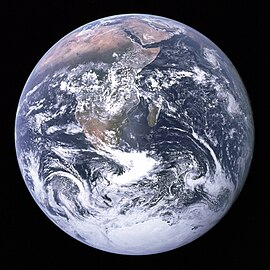 |
The history of the world is the history of humanity, beginning with the Paleolithic Era. Distinct from the history of Planet Earth (which includes early geologic history and prehuman biological eras), world history comprises the study of archeological and written records, from ancient times on. Ancient recorded history begins with the invention of writing. However, the roots of civilization reach back to the period before the invention of writing. Prehistory begins in the Paleolithic Era, or "Early Stone Age," which is followed by the Neolithic Era, or New Stone Age, and the Agricultural Revolution (between 8000 and 5000 BCE) in the Fertile Crescent. The Neolithic Revolution marked a change in human history, as humans began the systematic husbandry of plants and animals. Agriculture advanced, and most humans transitioned from a nomadic to a settled lifestyle as farmers in permanent settlements. Nomadism continued in some locations, especially in isolated regions with few domesticable plant species; but the relative security and increased productivity provided by farming allowed human communities to expand into increasingly larger units, fostered by advances in transportation.
Tidak ada komentar:
Posting Komentar